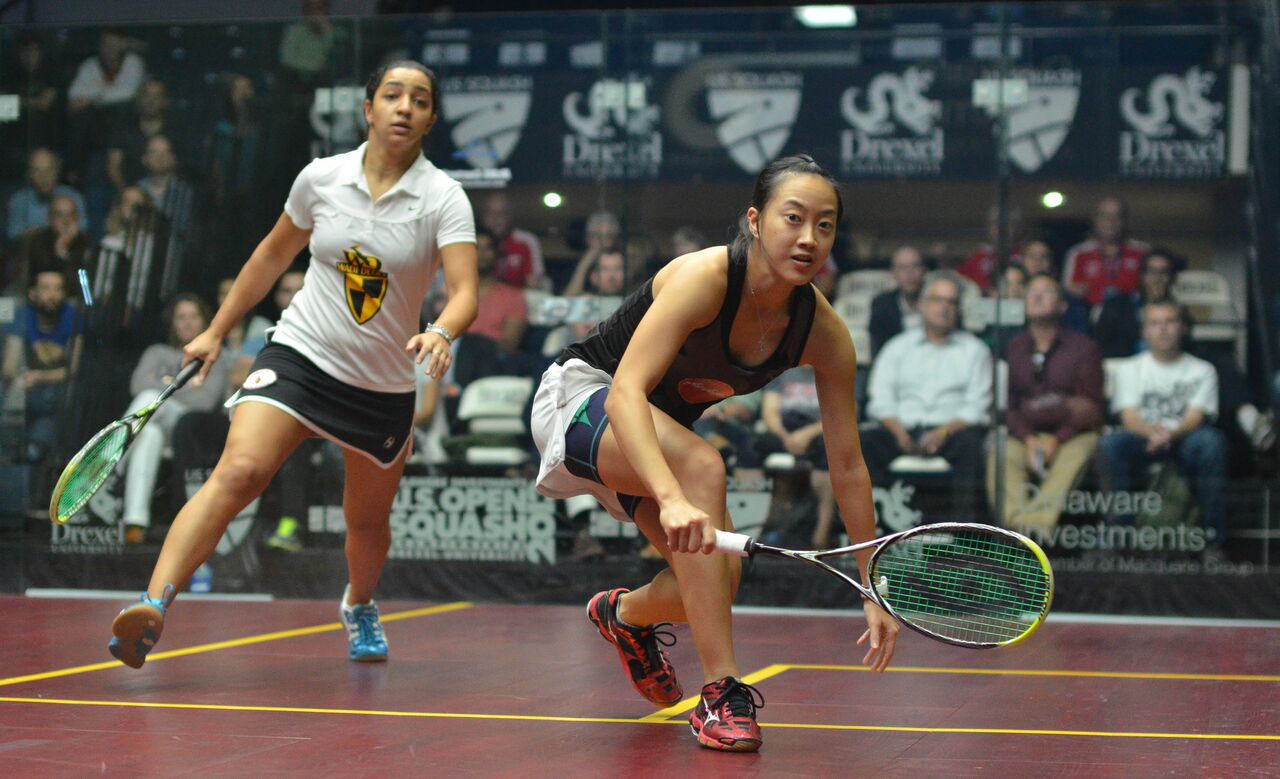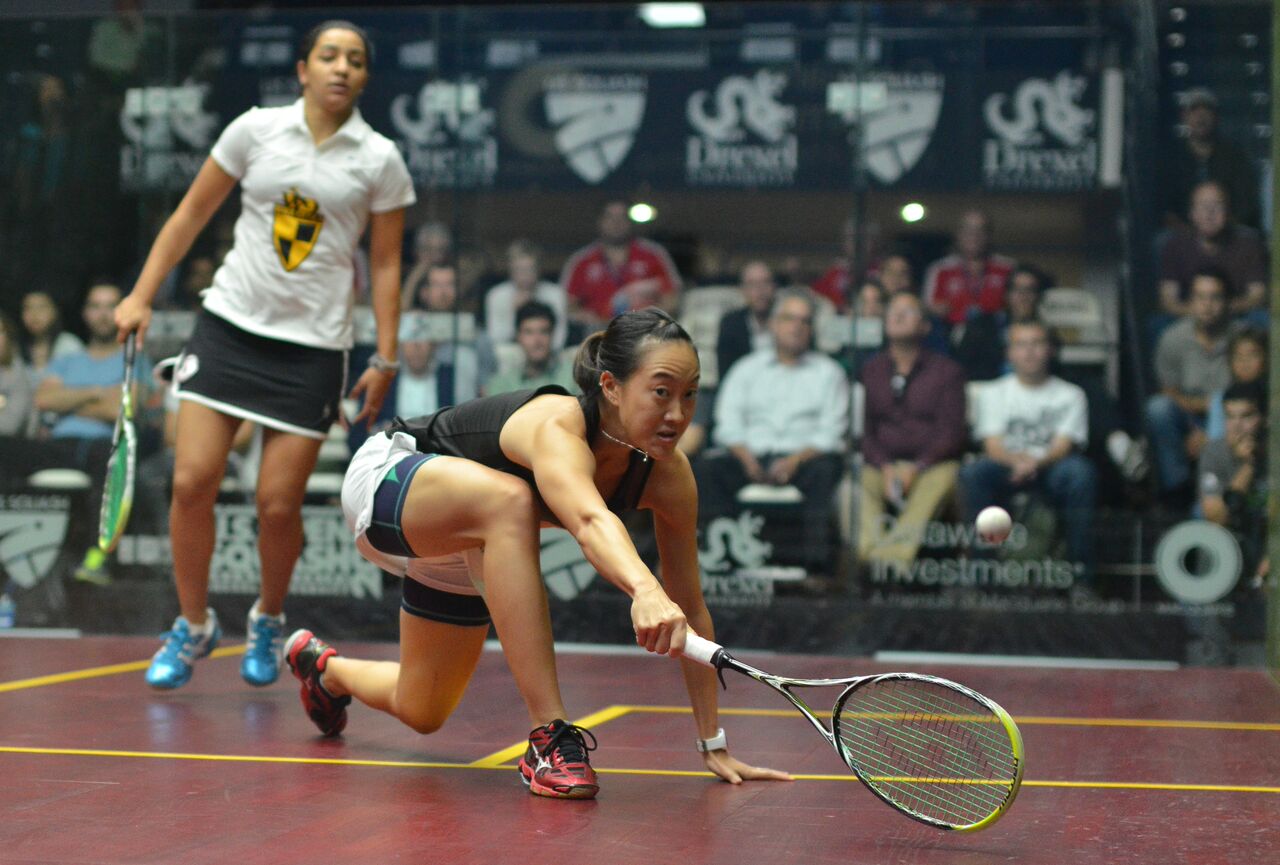By Richard Millman
As I have said before in this column, it is my belief that currently, we are still in the very early stages of development of this wonderful sport of ours.
In my program, ‘The Millman Experience,’ I am wont to tell many and varied anecdotes in illustration of the points that I try to get across to my students.
One of them, my ‘Low Wee Wern story,’ has received considerable acclaim from my leading students and I have been encouraged to share it, so here it is.
A couple of years ago, the wonderfully talented Malaysian exponent of our game – Low Wee Wern – was drawn against the fast rising genius from Egypt – Raneem El Weleily.
This exciting game was shown on Squash TV, where the commentator was former world champion Vanessa Atkinson.
A sequence of play began to repeat during the match, that saw the Egyptian start trapping Wee Wern in the backhand back corner and in reply the Malaysian attempting to play a deep, tight straight ball out of the backhand back corner.
The result of this attempt was invariably the same, namely that El Weleily would intercept Wee Wern’s ball and attack (and frequently end the rally) with either a cross-court nick or a straight drop volley.
After this had repeated a number of times, the commentator was heard to say words to the affect that what Wee Wern needed was a better quality height and width to get the ball past El Weleily.
My response to this as I attempted to engage the oblivious Vanessa Atkinson in a conversation through my television screen was to shout, ‘No Vanessa, that is not what her primary focus should be!’
Completely unfair on Vanessa of course as she was commentating on the spur of the moment and in all honesty what she said was what most people would have said. But I completely disagree and here’s why.

The sport of Squash is a dynamic and physical sport that is primarily about ‘being in position before your opponent can hit their next shot.’ It is not primarily about hitting the ball, it is primarily about using the design of your shot to facilitate your strategic position. How does this relate to the situation between Wee Wern and El Weleily? Simply like this: If Wee Wern had been more concerned with facilitating her movement in order to be just in front of El Weleily before the ball reached El Weleily, then El Weleily wouldn’t even have considered playing the cross-court nick or the straight drop volley – because Wee Wern’s physical presence would have persuaded her that playing short was too risky.
But there is even more to the situation than this. Human beings are constructed with the physicality of both power and fine control. Clearly the legs are the most powerful limbs, with the forearms, hands and fingers much more well suited to fine control. The legs are not our best equipment for delicate touch – although our feet are pretty good at fine positioning if we train them (ladder drills are excellent for this). Equally our forearms, hands and fingers quickly lose their capacity for finesse if we overload them.
HOW DOES THIS PLAY OUT IN THE WEE WERN SITUATION ?
If Wee Wern’s first concern is to strike the ball then it is the racquet bearing arm, forearm, hand and fingers that are first stimulated – sadly leading to a static, overloaded, attempt to propel the ball to the ‘ high tight length’ of the earlier description and thus delaying her movement toward strategic position up the court where she could psychologically threaten and perhaps change El Weleily’s shot selection. Additionally by focusing on playing the shot, the fine control muscles of the forearm, hand and fingers become overloaded as she tries to supply power with those parts of her body – which are unable to both supply power and retain their fine control.
If, on the other hand, her first concern is about how she can make sure she gets up the court before El Weleily can intercept her ball, then her priorities and her bio-mechanics will change noticeably.
When movement is the priority, the powerful legs are initiated before the arms, forearms, hands and fingers. As a result the entire mass of the player is engaged. This ripple of energy can now be precisely channeled through the fingers as the player is in transit towards an early arrival at the key strategic position up the court – before the ball gets half way back down the court to the opponent.
Squash is about using your shots to get you to your strategic position – not about hitting shots. Our sport is a rallycentric sport about continuously moving toward the future. It is not a shot-centric sport focused on committing energy and resources to one current event. Such behavior quickly makes us complacent as we only focus on what we are doing at that moment and puts us behind the game. Moreover the bio-mechanics of prioritizing shots over movement leads to static behavior – producing inefficient, stop-start play where players’ own behavior delays their availability to defend themselves by vital moments.
Remember the Wee Wern story: getting into position encompasses playing a shot as you are on the way, whether offensive or defensive, in a timely fashion. If you focus on executing a shot, you tend to forget movement and most importantly : moving to wherever it is you need to be in a timely


